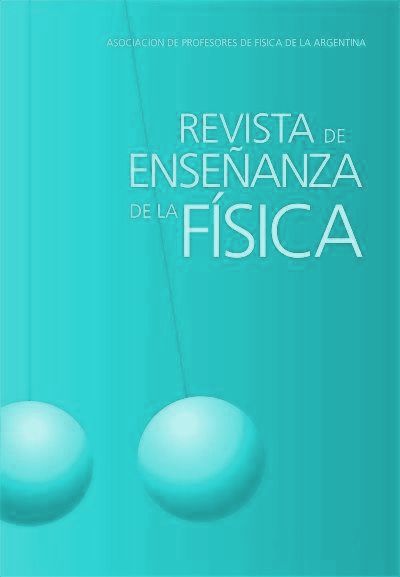Problemas experimentales en la enseñanza de la física con perspectiva de género
Palabras clave:
Enseñanza de la Física, Problemas experimentales, Perspectiva de géneroResumen
La inclusión de la perspectiva de género en la enseñanza de la física implica una mirada crítica y reflexiva sobre las desigualdades de género en la ciencia, y un compromiso activo por promover una enseñanza más equitativa. Con el fin de investigar el rol que asumen varones y mujeres al resolver en el laboratorio lo que denominamos problema experimentalse analizaron, con un enfoque cualitativo, las actuaciones de 116 estudiantes del ciclo básico de carreras de ingeniería de la Facultad Regional Rosario de la Universidad Tecnológica Nacional cuando resuelven en grupos un problema experimental de Física. Se llevaron a cabo observaciones del comportamiento del estudiantado durante la actividad de resolución del problema experimental, complementando la recolección de datos con la revisión de un registro fílmico del evento y grabaciones de las conversaciones en el grupo. Las mismas se interpretaron con base en los roles de género, observándose que los patrones comportamentales encontrados se condicen, en gran medida, con los roles de género asignados socialmente.
Referencias
Anderson, S. & Johanson, A. (2016) Gender gap or program gap? Students’ negotiations of study practice in a course in electromagnetism. Physical Review Physics Education Research, 12, 020112 .
Argiroffo, B. & Scalona, E. (Comps.). (2016). Educación Sexual Integral y enseñanza de las Ciencias Sociales. Enfoques, sujetos y objetos para su abordaje en la escuela secundaria. Rosario: Coad y Amsafe Rosario.
CIN. (2019). Acuerdo plenario 1076/19. Disponible en https://ruge.cin.edu.ar/attachments/article/46/Acuerdo%20P.1076-19%20CIN%20Ley%20Micaela%20(1).pdf
Confedi. (2014). Competencias en Ingeniería. https://confedi.org.ar/download/documentos_confedi/Cuadernillo-deCompetencias-del-Confedi.pdf
Confedi (2018). Propuesta de estándares de segunda generación para la acreditación de carreras de ingeniería en la república argentina “Libro rojo de Confedi”. Universidad FASTA Ediciones.
Confedi. (2019). Declaración sobre Adhesión de las universidades a la Ley Micaela. Disponible en https://confedi.org.ar/wp-content/uploads/2019/06/Declaración-sobre-Adhesión-de-las-universidades-a-la-Ley-MicaelaMayo2019.pdf
Day, J., Stang, J., Holmes, N. , Kumar, D. & Bonn, D. (2016). Gender gaps and gendered action in a first-year physics laboratory. Physical Review Physics Education Research, 12, 020104
Farina, J., Concari, S., Del Greco, D., Paradiso, L., Sargés Guerra, R. y Oliveros Vega, M. (2011).Trazado de líneas equipotenciales. REF XI Reunión Nacional Educación en Física, Villa Giardino, Córdoba.
Farina, J. A., del Greco, D., Sargés Guerra, R., y Concari, S. (2019). Competencias y problemas experimentales en prácticas de laboratorio. Revista de Enseñanza de la Física, 31, 311–318.
Faur, E. (2008). Desafíos para la igualdad de género en la Argentina. 1.a ed. Buenos Aires: PNUD.
Flores, J., Caballero Sahelices, M. C., y Moreira, M. A. (2009). El laboratorio en la enseñanza de las ciencias: Una visión integral en este complejo ambiente de aprendizaje. Revista de Investigación, 75-111.
Hernández, C. (2023) Enseñar y aprender física sin limitaciones de género. XV Conferencia Interamericana de Ensino de Física e III Encontro Nacional do MNPEF. ttps://www.researchgate.net/publication/373072063_Ensenar_y_aprender_fisica_sin_limitaciones_de_genero
Iglesias Álvarez, I. (2022, abril 28). La brecha de género en el sector tecnológico. Computerworld. https://www.computerworld.es/tendencias/la-brecha-de-genero-en-el-sector-tecnologico-es-una-realidad-en-2022
Madsen, A., McKagan, S. B. & Sayre, E. C. (2013).Gender gap on concept inventories in physics: What is consistent, what is inconsistent, and what factors influence the gap? Physical Review Physics Education Research, 9, 020121
Moreno Sardá, A (2020). La crítica del paradigma androcéntrico: una estrategia epistemológica para una política feminista equitativa. En Fabbri, L. y otros. Apuntes Epistemológicos. Cuadernos feministas para la transversalización, UNR Editora, (pp. 31-66).
Otero, V. K. y Meltzer, D. (2016). 100 años de intentos de transformar la educación física. Física Enseñar, 54(9), 523-527. DOI: https://doi.org/10.1119/1.4967888
Perrenoud, Ph. (2001). La formación de los docentes en el siglo XXI. Revista de Tecnología Educativa, XIV(3), 503-523.
Quinn, K., Kelley, M., McGill, K., Smith, E., Whipps, Z. & Holmes, N. G. (2020). Group roles in unstructured labs show inequitable gender divide. Physical Review Physics Education Research 16, 010129
Scherr, R. (2016) Never mind the gap: Gender-related research in Physical Review Physics Education Research, 2005–2016, Physical Review Physics Education Research, 12, 020003(E) .
Sundstrom, M. Wu, D., Walsh, C., Heim, A. & Holmes, N. G. (2022). Examining the effects of lab instruction and gender composition on intergroup interaction networks in introductory physics labs Physical Review Physics Education Research, 18(1), 010102. DOI: https://doi.org/10.1103/PhysRevPhysEducRes.18.010102
Descargas
Publicado
Número
Sección
Licencia

Esta obra está bajo una licencia internacional Creative Commons Atribución-NoComercial-SinDerivadas 4.0.
Aquellos autores/as que tengan publicaciones con esta revista, aceptan los términos siguientes:Los autores/as conservarán sus derechos de copiar y redistribuir el material, bajo los términos estipulados en la Licencia de reconocimiento, no comercial, sin obras derivadas de Creative Commons que permite a terceros compartir la obra bajo las siguientes condiciones:
- Reconocimiento — Debe reconocer adecuadamente la autoría, proporcionar un enlace a la licencia e indicar si se han realizado cambios. Puede hacerlo de cualquier manera razonable, pero no de una manera que sugiera que tiene el apoyo del licenciador o lo recibe por el uso que hace.
- NoComercial — No puede utilizar el material para una finalidad comercial.
- SinObraDerivada — Si remezcla, transforma o crea a partir del material, no puede difundir el material modificado.
- Los autores/as podrán adoptar otros acuerdos de licencia no exclusiva de distribución de la versión de la obra publicada (p. ej.: depositarla en un archivo telemático institucional o publicarla en un volumen monográfico) siempre que se indique la publicación inicial en esta revista.
- Se permite y recomienda a los autores/as difundir su obra a través de Internet (p. ej.: en archivos telemáticos institucionales o en su página web) antes y durante el proceso de envío, lo cual puede producir intercambios interesantes y aumentar las citas de la obra publicada. (Véase El efecto del acceso abierto).











